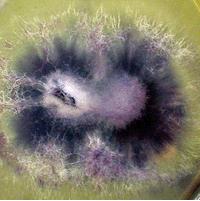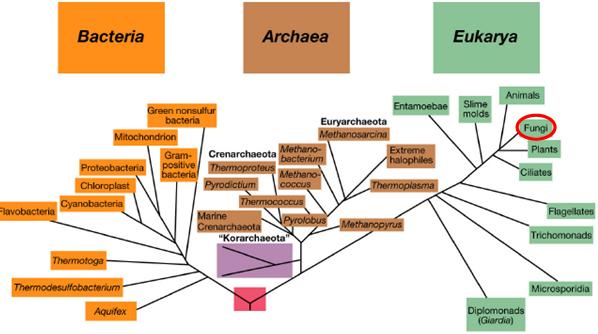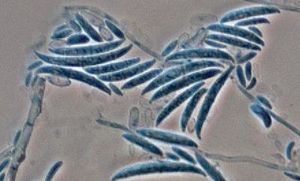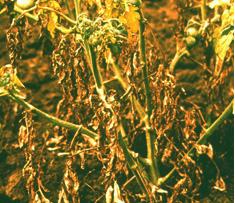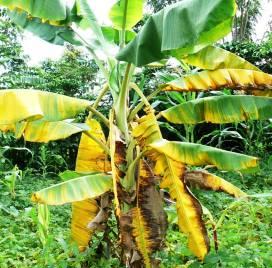Fusarium oxysporum
Classification
Superkingdom: Eukaryota; Kingdom: Fungi; Phylum: Ascomycota; Class: Sordariomycetes; Order: Hypocreales; Genus: Fusarium
Species
|
NCBI: Taxonomy |
Fusarium oxysporum
Description and Significance
Describe the appearance, habitat, etc. of the organism, and why you think it is important.
Genome Structure
Describe the size and content of the genome. How many chromosomes? Circular or linear? Other interesting features? What is known about its sequence?
Cell Structure, Metabolism and Life Cycle
Interesting features of cell structure; how it gains energy; what important molecules it produces.
F. oxysporum is a rapidly growing colony, which can expand to 4.5 cm in a few days.
Ecology and Pathogenesis
Habitat; symbiosis; biogeochemical significance; contributions to environment.
If relevant, how does this organism cause disease? Human, animal, plant hosts? Virulence factors, as well as patient symptoms.
Fusarium oxysporum has many Formae speciales (special forms) that exist as plant pathogens, causing storage, root, stem, and fruit rot, as well as vascular wilt. They are also important mycotoxin (toxic metabolite) producers. These various special forms infect certain crops.
- F. oxysporum f.sp. cubense causes Banana wilt
- F. oxysporum f.sp. vasinfectum causes wilt of cotton
- F. oxysporum f.sp. batatas causes wilt of sweet potatoes and stem rot
- F. oxysporum f.sp. lycopersici causes tomato wilt
In general, the fungi manages to infect the vascular system of the plant, where it wreaks havoc. The outward signs of fusarium wilt is the plant's leaves turning yellow or brown, and then falling off. As the disease progresses, the fungi will eventually reach the fruit and alter the natural color to a yellowish hue. Often, the plant dies before reaching its mature stage. [4]
Although much more well known for the aforementioned plant pathogenicity, Fusarium oxysporum has also been shown to be pathogenic to humans and animals. [2]. The diseases associated with Fusarium include:
- Fungal keratitis - The fungal infection of the cornea that can infect the eyeball and causes abscesses to form on it. [5]
- Onychomycosis - The fungal infection of the nail that can cause fingernails or toenails to thicken, discolor, disfigure, and split. [6]
- Hyalohyphomycosis - A fungal infection of the skin that can result in an extreme rash or penetrate the dermis and cause infection or internal bleeding. [7]
References
[1] http://www-unix.oit.umass.edu/~psoil120/images/fusarium.jpg
[2] http://www.mycology.adelaide.edu.au/Fungal_Descriptions/Hyphomycetes_%28hyaline%29/Fusarium/
[3] http://platforms.inibap.org/xanthomonaswilt/index.php?option=com_content&view=article&id=74&Itemid=94&lang=english
[4] http://www.oisat.org/pests/diseases/fungal/fusarium_wilt.html
[5] http://medical-dictionary.thefreedictionary.com/mycotic+keratitis
[6] http://www.emedicinehealth.com/onychomycosis/article_em.htm
[7] http://www.mycology.adelaide.edu.au/Mycoses/Opportunistic/Hyalohyphomycosis/
[8] http://www.uveitis.org/medical/articles/case/fungal_keratitis.html
[9] http://www.myfootshop.com/detail.asp?Condition=Onychomycosis
[10] http://www.thelancet.com/journals/lancet/article/PIIS0140-6736%2800%2902774-4/fulltext
Author
Page authored by Andrew Smith and Andrew Smedley, students of Prof. Jay Lennon at Michigan State University.
<-- Do not remove this line-->
